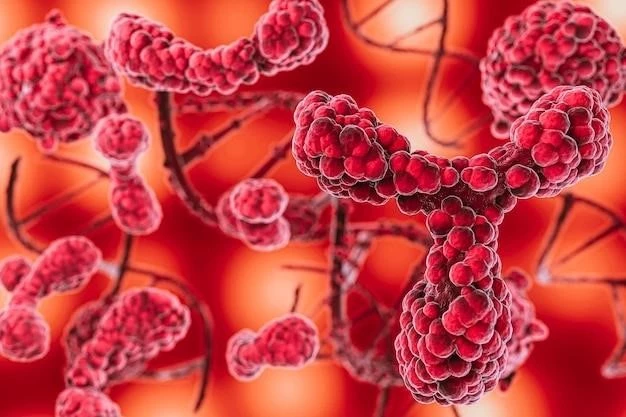Fever‚ night sweats‚ weight loss‚ skin rash‚ enlarged lymph nodes‚ and autoimmune complications.
Common Symptoms
Fever‚ night sweats‚ weight loss‚ skin rash‚ enlarged lymph nodes‚ and autoimmune complications are common symptoms of Angioimmunoblastic Lymphadenopathy with Dysproteinemia. These can vary in intensity and may present differently in each individual. Early recognition of these symptoms is crucial for prompt medical evaluation and treatment.
The exact cause of Angioimmunoblastic Lymphadenopathy with Dysproteinemia is unknown‚ but it may be linked to immune system dysfunction.
Possible Causes
Angioimmunoblastic Lymphadenopathy with Dysproteinemia may be caused by abnormalities in the immune system‚ specifically involving T-cells. Genetic factors and viral infections have also been proposed as possible contributors to the development of this condition. However‚ the precise etiology remains unclear‚ and further research is needed to fully understand the underlying causes of this disease.
Diagnosing Angioimmunoblastic Lymphadenopathy with Dysproteinemia involves blood tests‚ imaging‚ and lymph node biopsy.
Diagnostic Procedures
Diagnosing Angioimmunoblastic Lymphadenopathy with Dysproteinemia typically involves thorough physical examinations‚ blood tests to evaluate protein levels and immune system function‚ imaging studies like CT or PET scans to assess lymph nodes‚ and a lymph node biopsy for definitive diagnosis. A multidisciplinary approach may be needed to confirm the condition accurately and determine the most appropriate treatment plan.

Treatment for Angioimmunoblastic Lymphadenopathy with Dysproteinemia may include immunosuppressive therapy and supportive care.
Treatment Approaches
Management of Angioimmunoblastic Lymphadenopathy with Dysproteinemia focuses on alleviating symptoms and managing complications. Treatment options may involve corticosteroids‚ chemotherapy‚ monoclonal antibodies‚ stem cell transplants‚ and immunomodulatory drugs. Supportive therapies such as blood transfusions‚ antibiotics‚ and addressing autoimmune manifestations are also utilized to improve quality of life and overall outcomes for patients with this condition.
Survival rates for Angioimmunoblastic Lymphadenopathy with Dysproteinemia can vary based on age and overall health.
Factors Affecting Prognosis
Several factors can impact the prognosis of Angioimmunoblastic Lymphadenopathy with Dysproteinemia‚ including the stage of the disease at diagnosis‚ response to treatment‚ presence of specific genetic mutations‚ and overall immune system function. Additionally‚ the development of complications and the patient’s ability to tolerate treatments can influence the long-term outlook. Close monitoring and individualized care are essential to managing the disease and improving prognosis in affected individuals;
The specific risk factors for Angioimmunoblastic Lymphadenopathy with Dysproteinemia are not well-defined.
Common Risk Factors
Currently‚ there are no well-established common risk factors associated with the development of Angioimmunoblastic Lymphadenopathy with Dysproteinemia. Due to the complexity and rarity of this condition‚ further research is needed to identify any potential contributing factors or predisposing conditions. Understanding these risk factors can help in early detection and management of the disease.
Management of Angioimmunoblastic Lymphadenopathy with Dysproteinemia involves symptom control and supportive care.
Management Strategies
The management of Angioimmunoblastic Lymphadenopathy with Dysproteinemia involves a multidisciplinary approach‚ including pharmacological interventions to suppress the immune response‚ alleviate symptoms‚ and reduce inflammation. Supportive care plays a crucial role in addressing complications and improving quality of life. Regular monitoring‚ counseling‚ and close collaboration between healthcare providers and patients are vital for effective disease management. Additionally‚ participation in clinical trials and staying informed about emerging therapies can offer new avenues for treatment.
Ongoing research in Angioimmunoblastic Lymphadenopathy with Dysproteinemia focuses on improving treatment outcomes and understanding disease mechanisms.
Current Research Areas
Current research on Angioimmunoblastic Lymphadenopathy with Dysproteinemia is focused on identifying novel biomarkers for early detection‚ elucidating the genetic and immunological factors contributing to the disease‚ exploring targeted therapies to improve outcomes‚ and investigating potential immunotherapy approaches. Clinical trials are also underway to evaluate the efficacy of new treatment modalities‚ such as immune checkpoint inhibitors and personalized medicine strategies. Advances in understanding the pathogenesis of this rare condition are key to developing tailored and effective therapies for affected individuals.
